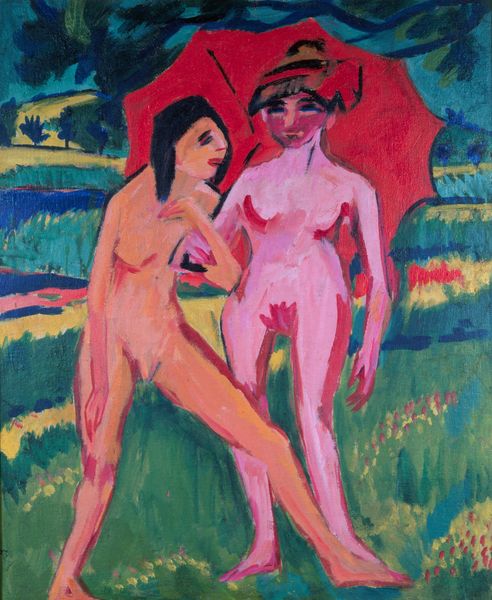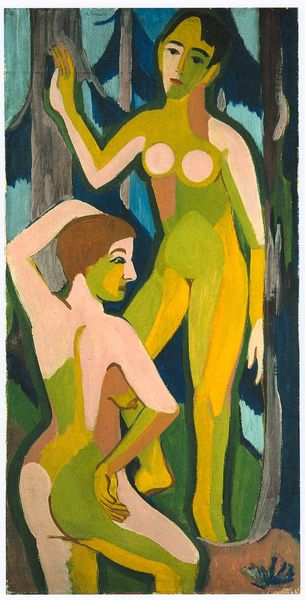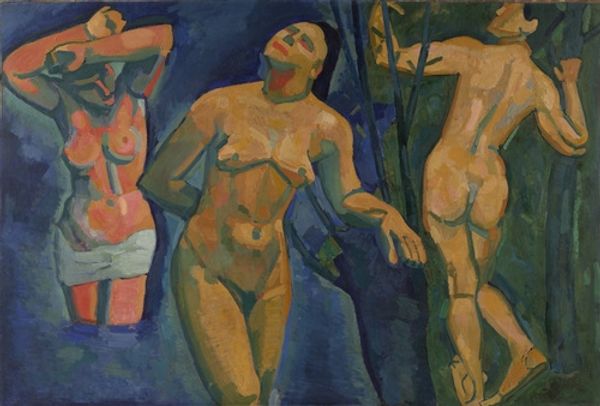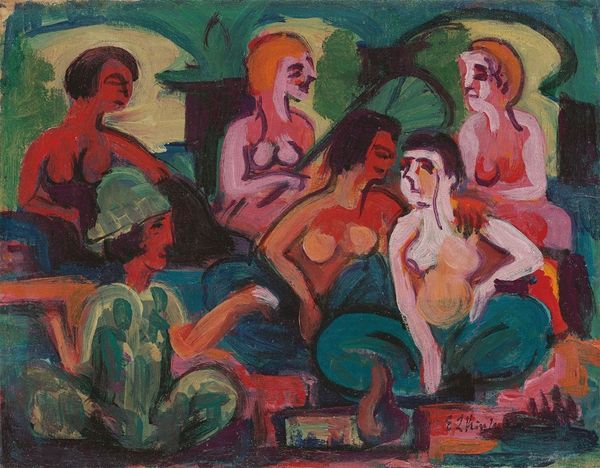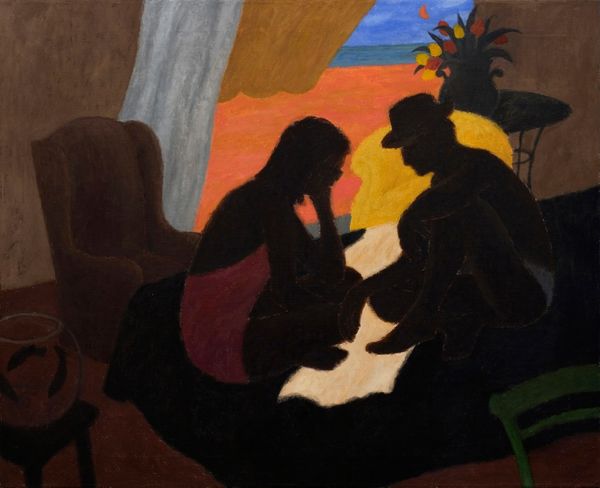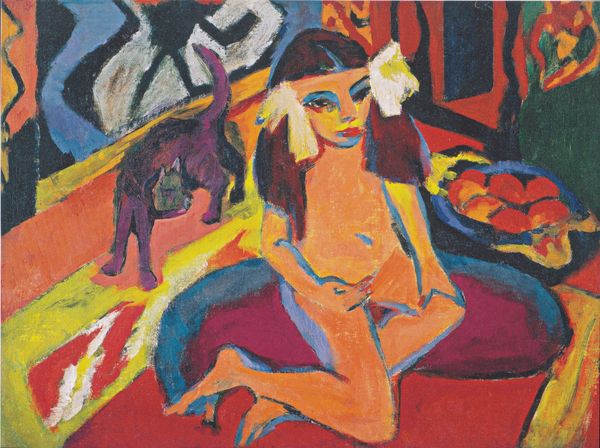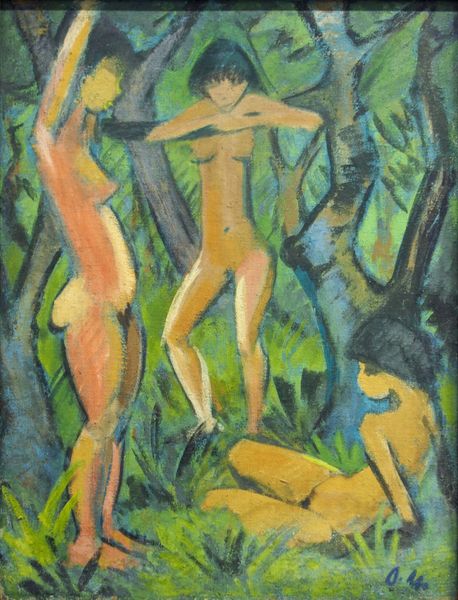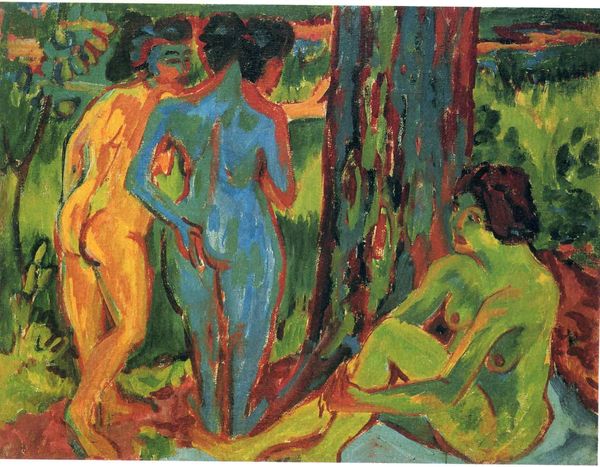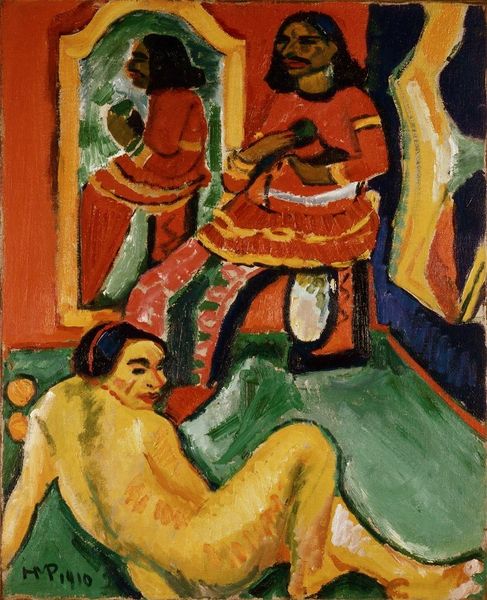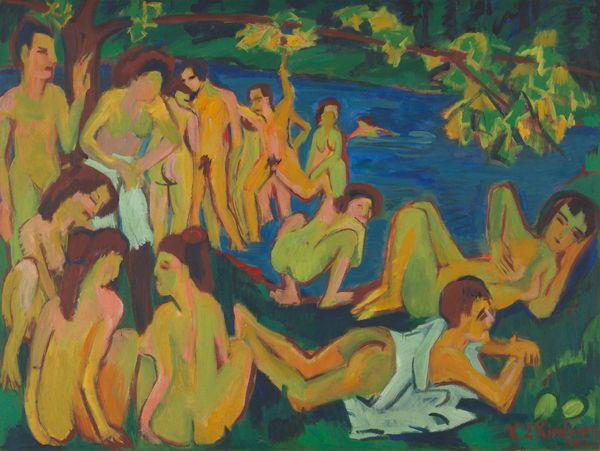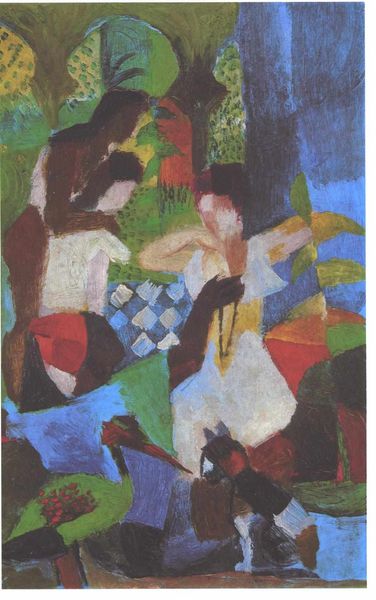
Dimensions: 130 x 110 cm
Copyright: Public domain
Curator: Ernst Ludwig Kirchner painted "Bathing Women and Children" in 1932, an oil-on-canvas artwork showing a lakeside scene of two adult female figures with two smaller child figures. Editor: It feels unsettling. The figures are rendered in this somewhat aggressive, graphic style, and yet there's this casual, familial subject matter. It's not peaceful at all. Curator: That tension speaks volumes, I think. Post-World War I, Kirchner wrestled deeply with trauma and disillusionment. He became reclusive in Switzerland, which perhaps explains this idyllic theme of bathing figures, although as you said it certainly isn't shown sentimentally. Look closely: these are not classical, harmonious nudes. Editor: Exactly. The cross-hatching throughout, particularly across the figures' skin, feels like a visual symbol for disruption and unease. And the figures are strangely colored; a kind of pale pink, overlain with yellow dashes. This clashes intensely with the almost violently clashing red and blue colors used throughout the scene. Is it representative? Curator: Perhaps it shows a certain social disruption of his place and role. It would not be wrong to contextualize this with theories surrounding societal anxieties of the interwar period, thinking specifically about gender roles and evolving societal norms that often appeared in the era's artistic imagery. Even the faces... blank and devoid of typical beauty. Editor: There's an unsettling universality. One can almost see an echo of past symbolist representations of figures in water... but inverted. What was meant to evoke purity or cleansing is tainted. There is something primordial here. The children also appear somewhat frozen. They evoke figures trapped in time or space. It speaks of fragmentation. Curator: I agree entirely. To see Kirchner exploring such familiar and yet fragmented subject matter is rather a bold testament to the pervasive societal anxiety that he was processing and grappling with throughout the course of his career. Editor: In seeing it within the context of post-war tension and social transformation it gains a haunting resonance, an exploration into collective, internalized social trauma of the period. Curator: It really becomes much more complex upon closer observation.
Comments
No comments
Be the first to comment and join the conversation on the ultimate creative platform.
